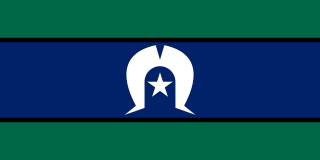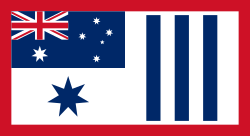
A national flag is a flag that represents and symbolizes a country. The national flag is flown by the government of a country, but can usually also be flown by citizens of the country. A national flag is designed with specific meanings for its colours and symbols. The colours of the national flag may be worn by the people of a nation to show their patriotism, or related paraphernalia that show the symbols or colours of the flag may be used for those purposes.

Armistice Day is commemorated every year on 11 November to mark the armistice signed between the Allies of World War I and Germany at Compiègne, France at 5:45 am, for the cessation of hostilities on the Western Front of World War I, which took effect at eleven o'clock in the morning—the "eleventh hour of the eleventh day of the eleventh month" of 1918. But, according to Thomas R. Gowenlock, an intelligence officer with the U.S. First Division, shelling from both sides continued for the rest of the day, only ending at nightfall. The armistice initially expired after a period of 36 days and had to be extended several times. A formal peace agreement was only reached when the Treaty of Versailles was signed the following year.

The Distinguished Flying Cross (DFC) is the third-level military decoration awarded to officers, and since 1993 to other ranks, of the United Kingdom's Royal Air Force and other services, and formerly to officers of other Commonwealth countries, for "an act or acts of valour, courage or devotion to duty whilst flying in active operations against the enemy".

The Distinguished Service Order (DSO) is a military decoration of the United Kingdom, and formerly of other parts of the Commonwealth, awarded for meritorious or distinguished service by officers of the armed forces during wartime, typically in actual combat. Since 1993 all ranks have been eligible.

The flag of Malaysia, also known as the Malay: Jalur Gemilang, is composed of a field of 14 alternating red and white stripes along the fly and a blue canton bearing a crescent and a 14-point star known as the Bintang Persekutuan. The 14 stripes, of equal width, represent the equal status in the federation of the 13 member states and the federal territories, while the 14 points of the star represent the unity between these entities. The crescent represents Islam, the country's state religion; the blue canton symbolises the unity of the Malaysian people; the yellow of the star and crescent is the royal colour of the Malay rulers.

The Distinguished Service Cross (DSC) is a third level military decoration awarded to officers, and since 1993 ratings and other ranks, of the British Armed Forces, Royal Fleet Auxiliary and British Merchant Navy, and formerly also to officers of other Commonwealth countries.

The Military Cross (MC) is the third-level military decoration awarded to officers and other ranks of the British Armed Forces, and formerly awarded to officers of other Commonwealth countries.

The Commonwealth Star is a seven-pointed star symbolising the Federation of Australia which came into force on 1 January 1901.

The Air Force Cross (AFC) is a military decoration awarded to officers, and since 1993 other ranks, of the United Kingdom Armed Forces, and formerly also to officers of the other Commonwealth countries. It is granted for "an act or acts of exemplary gallantry while flying, though not in active operations against the enemy". A bar is added to the ribbon for holders who are awarded a further AFC.
A member of the armed forces mentioned in dispatches is one whose name appears in an official report written by a superior officer and sent to the high command, in which his or her gallant or meritorious action in the face of the enemy is described.
The Cross of Valour was established in 1975 as the highest Australian Bravery Award. The awards were established as part of the institution of the Australian Honours System. The Cross of Valour has been awarded to five Australian civilians and, although there has been no Australian military recipient, they would be eligible in situations where normal honours to the military do not apply.

The Military Medal (MM) was a military decoration awarded to personnel of the British Army and other arms of the armed forces, and to personnel of other Commonwealth countries, below commissioned rank, for bravery in battle on land. The award was established in 1916, with retrospective application to 1914, and was awarded to other ranks for "acts of gallantry and devotion to duty under fire". The award was discontinued in 1993 when it was replaced by the Military Cross, which was extended to all ranks, while other Commonwealth nations instituted their own award systems in the post war period.

The Australian Red Ensign resulted from the Commonwealth Government's 1901 Federal Flag Design Competition which required two entries: a flag for official Commonwealth Government use and another for the merchant navy. The winning design was based on the traditional British Red Ensign and featured the Southern Cross and Commonwealth Star.

A battle honour is an award of a right by a government or sovereign to a military unit to emblazon the name of a battle or operation on its flags ("colours"), uniforms or other accessories where ornamentation is possible.

The Torres Strait Islander Flag is an official flag of Australia, and is the flag that represents Torres Strait Islander people. It was designed in 1992 by Bernard Namok. It won a local competition held by the Islands Coordinating Council, and was recognised by the Aboriginal and Torres Strait Islander Commission in June 1992.
The Centenary Medal was an award created by the Australian Government in 2001. It was established to commemorate the Centenary of Federation of Australia and to honour people who have made a contribution to Australian society or government. It was also awarded to centenarians: Australian citizens born on or before 31 December 1901 who lived to celebrate the centenary of federation on 1 January 2001. Nominations were assessed by a panel chaired by Professor Geoffrey Blainey, a historian.

The flag of Australia is based on the British maritime Blue Ensign – a blue field with the Union Jack in the canton or upper hoist quarter – augmented or defaced with a large white seven-pointed star and a representation of the Southern Cross constellation, made up of five white stars – one small five-pointed star and four, larger, seven-pointed stars. There are other official flags representing Australia, its people and core functions of government.
The Star of Courage (SC) is a bravery decoration awarded to Australians. It is awarded for acts of conspicuous courage in circumstances of great peril. The SC was created on 14 February 1975. The decoration recognises acts of bravery by members of the community. They selflessly put themselves in jeopardy to protect the lives or property of others. It is ranked second in the Australian civil bravery decorations in the Australian Honours System. Recipients of the Star of Courage are entitled to use the post-nominal letters "SC".

The Australian flag debate is a periodic question over whether the Australian flag should be changed, particularly to remove the Union Jack from the canton, but also to possibly introduce a completely new design without the Southern Cross.

The United Nations Honour Flag was a flag symbolizing the Allies of World War II and their goal of world peace. It was designed in October 1942 by Brooks Harding, and it had some degree of use as a flag from 13 June 1943 to c. 1948 to represent the "United Nations" in the sense of the January 1942 Declaration by United Nations. However, it was never an official flag of the United Nations as an organization.
















